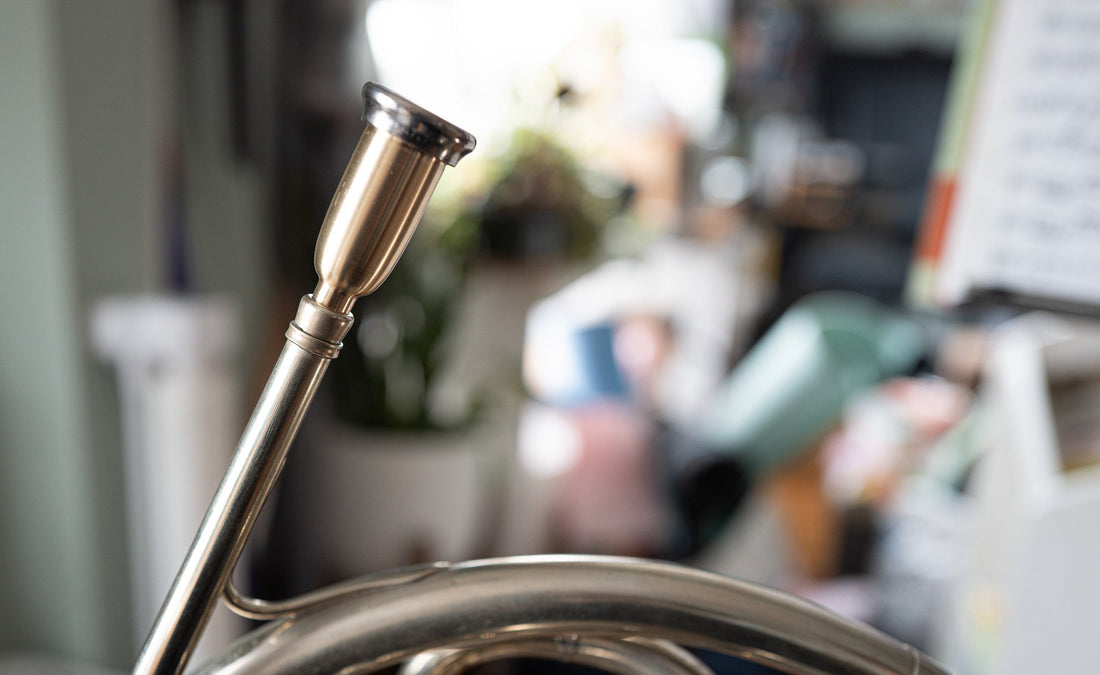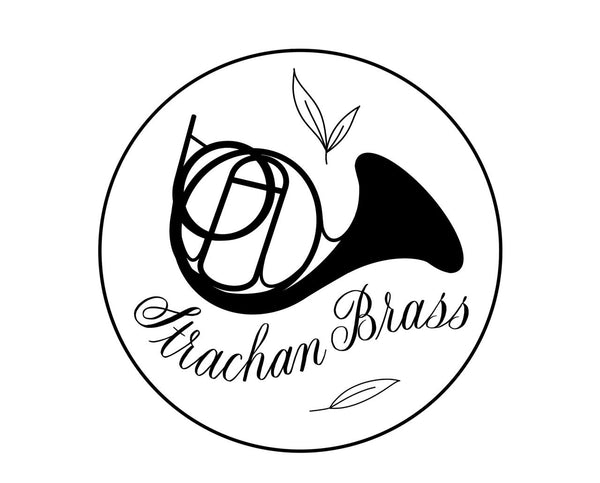On the weight of things
Share
Here at Strachan Brass, we field a lot of questions. Sometimes they pertain to topics I've studied deeply, and other times they lead to entirely new lines of inquiry, which often take us from something I've been designing around intuitively to something I need to study in-depth.
A few months - our first customer in Japan, Yoshimasa Kasahara (check out his playing here and here if you're not familiar!), had ordered a Model G and was excited to try it because it's so rare for threaded underparts to be available in size 19. In Japan, the prevailing sound often requires small bore sizes to blend in. His feedback was that the G, although promising, wasn't tight enough for that specific context. He wondered what would happen if we added a few grams to it.
Around the same time we were launching the GH and some early prototypes showed a need for a different exterior profile; they just weren't creating a dense enough sound and it wasn't entirely clear why as other makers had even more open geometries that were pushing more core than the new model.
The key turned out to be understanding the relationship between weight and the playing characteristics of the mouthpiece, moving from an intuitive understanding to a more scientific approach. The only way to do that was to make some test articles.
To kick it off, a friend referred me to this video where Jon Kaplan, a trumpet player who evidently had the same question, created an absolute monstrosity: a 1.7lb trumpet mouthpiece to test. That gave a starting point of what we might expect from the experiments; more mass leads to tighter slotting, and a change in the sound color favoring the lower overtones. However, go to far and it runs the risk of feeling "dead" or lacking response in the startup of the notes.
The first thing to test was the GH - the design was otherwise ready to go but just didn't have a tight enough feeling or the gravitas it needed but it was otherwise extremely responsive, in tune and gave the characteristic color shift I was looking for. I made up 28g and 32g versions of it for testing and immediately the 28g version showed that it had the missing ingredients to get the design over the finish line. The 32g cup stood as something of a curiosity for a bit; I'd play it here and there but, for me and my horns the 28g was the winner.
That brings us back to the model G - what could a little mass do for what was already the tightest and brightest cup in the lineup? With an additional 5g loaded up the outside looked just like the standard GH and it was time to give it a try. The results were pretty good - it wasn't dull or dead but it did have exactly the tighter feeling that was expected. I didn't decide to move the Model G in this direction because the standard (light)-weight version creates the magic feel of being more open while giving the accuracy benefits of the small bore, but the G+ did as expected and offered something new for those who were looking.
The logical extreme though had yet to be realized; how would it affect the horn to make the mouthpiece as heavy as possible? Thus, the 60g brass watermelon was born (in this case there's an MD living under there). The impetus was to let the acoustics take over completely and find out where the slots on the horn were really sitting; was I fighting the horn with the mouthpiece I was using? Were my slides placed optimally?
Since we know the weight will make it play more "on rails" and narrow the slots, it was the perfect solution for debugging slides; it turned out my octaves were a bit wide but because of how the slots were landing I mistakenly thought they were narrow - I just hadn't been finding the same part of the slot in all registers.
Overall I conclude: a heavier mouthpiece will tighten up the slots, project a weightier sound with less high overtones, and feel generally more "on rails", with the downside being the potential for hesitation in the attack or a dullness to the playing feel.
This is a lot of words to say two things
1 - I now know more about how weight impacts the mouthpiece and will be using it as an explicit design factor going forward.
2 - I now have a potent new tool for debugging slide positions and other acoustic problems.
We're able to offer any weight modifications you might want as part of our "small tweaks" program - whether you want another gram or two or would like a brass watermelon of your own

